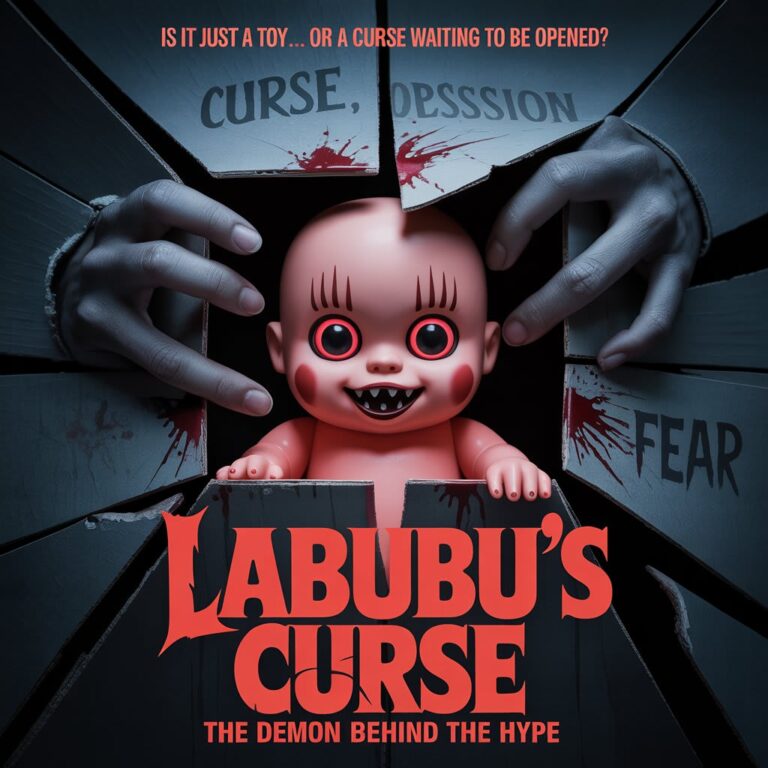In a world obsessed with trends, few could have predicted that a creepy, grinning doll would grip millions with both fascination — and fear. But Labubu isn’t your average collectible. It started as a harmless blind-box toy, a quirky creation from artist Kasing Lung, yet somehow evolved into a global phenomenon laced with obsession, superstition, and a dark mythos that has collectors hooked… and some even terrified.
The Birth of a Mischief-Maker
Labubu first appeared in 2015, crafted by Hong Kong-born illustrator Kasing Lung for his picture book series The Monsters. Designed with jagged teeth, oversized eyes, and a sinister smile, Labubu wasn’t meant to be cute — it was mischievous, even eerie. But that’s exactly what attracted a niche audience looking for something beyond the sugary-sweet world of mainstream toys.
In 2019, Chinese toy giant Pop Mart struck a deal to mass-produce Labubu in blind box format — mystery-packed toys where buyers never know which variant they’ll get until they open it. This “blind chance” created a powerful addiction among collectors. Some spent thousands trying to complete rare collections. Others camped outside stores for special releases.
But nobody expected what happened next.
When a Toy Became a Global Fever
The Labubu craze exploded worldwide, fueled by viral TikToks, unboxing videos, and celebrity endorsements.
When Blackpink’s Lisa flashed her Labubu charm on Instagram, the doll’s status skyrocketed overnight. Soon, stars like Rihanna, Dua Lipa, and even football legend David Beckham were spotted with Labubu accessories.
Pop Mart’s market strategy was nothing short of genius — or diabolical.
They capitalized on three powerful tactics:
• Artificial Scarcity — Limited edition releases that vanished within hours.
• Blind Box Addiction — The gambling-like thrill of chasing ultra-rare versions.
• Social Hype — Leveraging influencer culture to create mass desire.
Collectors lined up in Tokyo, Seoul, New York, and Paris. Resale markets exploded — with rare Labubu dolls fetching up to $170,000 at auction. It wasn’t just a toy. It was a status symbol, a currency of cool.
The Thrilling — and Creepy — Side of Labubu
But with fame came rumors. And soon, a chilling narrative grew alongside Labubu’s success.
In early 2025, strange stories began circulating online.
Collectors claimed their Labubu dolls moved from their original spots.
Others reported feeling a “presence” in rooms where the dolls were displayed.
One viral post even claimed a Labubu owner’s mirror cracked the night they unboxed a rare edition.
These weren’t isolated whispers. Social media exploded with hashtags like #LabubuCurse and #HauntedLabubu.
Some believed Labubu was tied to the ancient demon Pazuzu, a mythical entity known for bringing misfortune — a theory debunked by scholars but eagerly shared by thrill-seekers online.
Pop Mart stayed silent at first, thinking the horror angle would fade. But when rumors of a “cursed batch” of Labubu figures causing accidents began trending, they were forced to issue a statement denying any connection to dark folklore.
Of course, the statement only fanned the flames.
The Horror Marketing Nobody Planned
In truth, Pop Mart may have stumbled into the most powerful — and dangerous — marketing force of all: fear mixed with fascination.
Psychologists call it “curiosity-driven fear.”
It’s why people watch horror movies, read creepy pasta stories, and open blind boxes despite knowing they might be disappointed… or worse.
Labubu’s unsettling design, mixed with viral horror rumors, created an irresistible pull:
“What if it’s true?”
“What if I open the box… and regret it?”
Collectors kept buying. Videos of haunted Labubu stories racked up millions of views.
And Pop Mart’s sales? They soared.
The Sales That Defied Logic
Even as skeptics mocked the curse stories, Labubu merchandise kept selling out.
Pop Mart expanded globally — with over 500 stores and 2,500 vending machines in 30 countries.
Special edition drops sold for thousands on resale platforms.
Entire communities formed online around trading, sharing, and yes — fearing — Labubu.
Labubu had transcended toy status. It became part of modern folklore.
The Line Between Marketing and Myth
Was it all a clever plan?
Most likely not.
Labubu’s viral horror status seems to have been an unexpected storm of perfect marketing, celebrity power, and the world’s hunger for a new obsession tinged with a thrill of danger.
But one thing is clear:
Labubu proved that in today’s world, a toy doesn’t need to be safe or cute to sell.
Sometimes, the eerie smile of a demon-faced doll is all it takes to capture the world’s imagination — and wallets.
The Final Question
So, is Labubu just a toy… or a curse waiting to be opened?
You decide.
But next time you see that grinning face staring back at you from a blind box, ask yourself…
Do you really want to know what’s inside?


